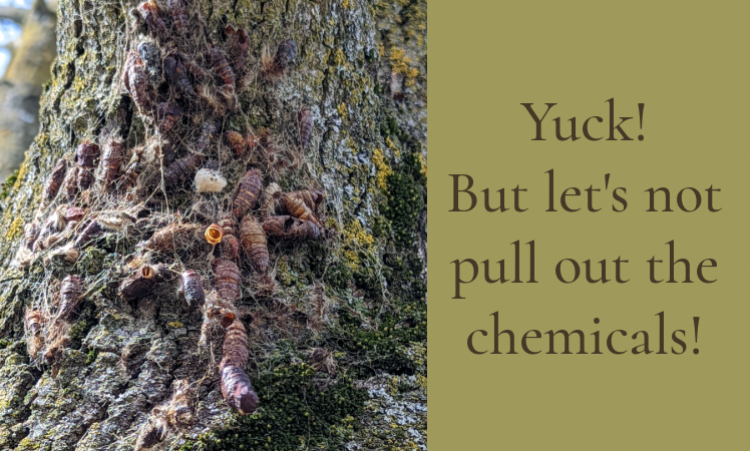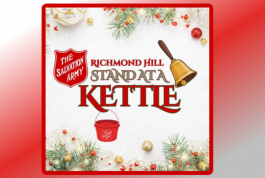The City is taking action to protect its trees from the effects of the leaf-eating spongy moth (also known as LDD moth) and providing resources for residents to help manage trees on their property.
Spongy moth is an invasive insect found throughout southern Ontario that feeds on a variety of tree species such as oak, birch and maple. It is known to have cyclical outbreaks every seven to 10 years. Spongy moth caterpillars eat leaves causing the trees to lose some or in extreme cases, all of their canopy. However, since the leaf canopy has the ability to regrow as the season progresses, long term effects can be reduced or prevented through management techniques.
What the City is doing to manage trees on public property
Richmond Hill is using a number of different methods to minimize damage to trees on City property and help reduce the spread of spongy moth in our community.
This includes:
- Egg mass removal from street and park trees throughout the winter to reduce the number of hatched caterpillars in the spring. To date, more than 49,000 egg masses have been removed
- Injecting select high value trees with insecticide (TreeAzin)
- Watering in the hotter summer months, if necessary, to further mitigate long term impacts
- Street and sidewalk sweeping in hot spot neighbourhoods from late May to early July
The City will not be conducting aerial spraying to treat spongy moth caterpillars. Aerial spraying is costly, does not reduce the pest’s population over the landscape long term, but aims to reduce defoliation levels. Aerial spraying requires multiple treatments, is only 60 to 80% effective and can still result in leaf loss. It can also affect other moth/butterfly species, which are an important source of food for many birds and other wildlife.
What residents can do to protect their trees
Trees on private property are the responsibility of the property owner.
Residents are encouraged to monitor the trees on their property for any signs of infection and take the following actions:
- Late August to early May: Where infestations are accessible, scrape egg masses into a container of soapy water and let them soak for one to two days before discarding them in the garbage.
- Early May to mid-July: Pick off hatched caterpillars daily by hand, put them in a container of soapy water for one to two days before discarding them in the garbage. Installing a burlap (or cloth) trap will make the caterpillars easier to collect and remove. Wearing gloves is advisable to avoid skin irritation.
Free burlap trap kits for Richmond Hill residents
Free burlap trap kits are now available at the Operations Centre (1200 Elgin Mills Road East) for Richmond Hill residents to pick up during regular business hours, Monday to Friday, 8:30 a.m. to 4:30 p.m. Kits are located at a self-serve station in the reception area. One kit per household, while quantities last.
For more information, visit www.RichmondHill.ca/SpongyMoth.
To Note:
The Entomological Society of Canada (ESC) has adopted the new common name of ‘spongy moth’ for Lymantria dispar dispar or LDD moth. Richmond Hill is joining the ESC and many other government agencies in adopting this new name. Over time, references to LDD moth in City materials will be updated to spongy moth.








